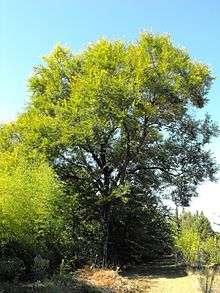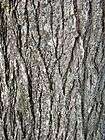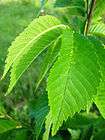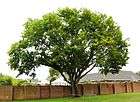''Ulmus'' 'Sapporo Autumn Gold'
| Ulmus hybrid cultivar | |
|---|---|
 'Sapporo Autumn Gold' at Antella, Florence, believed to be the largest in Europe. | |
| Hybrid parentage | U. davidiana var. japonica × U. pumila |
| Cultivar | 'Sapporo Autumn Gold' |
| Origin | seeds: Sapporo, Japan; cultivated: United States |
Ulmus 'Sapporo Autumn Gold' is one of the most commercially successful hybrid elm cultivars ever marketed, widely planted across North America and western Europe, although it has now been largely supplanted by more recent introductions.[1] Arising from a chance crossing of the Japanese elm (female parent) and Siberian elm, seed was sent in 1958 by Prof. Nobuku Takahashi and his colleagues at the Sapporo Botanical Garden of Hokkaido University, Sapporo,[2] to Eugene Smalley at the University of Wisconsin–Madison.[3][4] The patent issued in 1975 has expired, and there are now no propagation restrictions.
Description
The tree usually forks at 1.5–2 m from the ground to produce a broad, rounded, densely foliated crown, although immature plants produce vigorous side shoots requiring assiduous pruning to maintain shape. The bark is pale grey, and longitudinally fissured to form a random lattice pattern. The leaves are narrowly elliptical, < 9 cm long by < 4.5 cm wide, with 8 mm petioles. As the name implies, the leaves turn pale yellow in autumn.[5] The perfect, apetalous wind-pollinated flowers appear in early March, followed by the seeds in April; flowering usually begins when the tree is aged six years.
 Bark of 30-year-old tree
Bark of 30-year-old tree Foliage
Foliage Coastal tree, Mudeford, UK
Coastal tree, Mudeford, UK Tree left unpruned
Tree left unpruned
Pests and diseases
'Sapporo Autumn Gold' possesses a very high resistance to Dutch elm disease;[6][7] in trials in Italy, it sustained only 2.8% defoliation and 1.2% dieback when inoculated with unnaturally high concentrations of the fungal pathogen. The cultivar also has a tolerance of Verticillium wilt.[8] The tree's foliage was adjudged 'resistant' to black spot by the Plant Diagnostic Clinic of the University of Missouri , however it can be severely damaged by the elm leaf beetle (Xanthogaleruca luteola) in the United States [9] Several mature specimens near the Hampshire coast in England have become (2014) afflicted by Dryad's saddle fungus (Polyporus squamosus).[10]
Cultivation
In favourable conditions, notably a moist, well-drained soil, the tree can grow at a rate of almost one metre per year. Trials by the Northern Arizona University found that it is not very tolerant of a hot, arid environment although its leaves sustain comparatively little scorch damage. In trials in southern England conducted by Butterfly Conservation, the tree was found to be intolerant of ponding overwinter.[10] 'Sapporo Autumn Gold' was first introduced to the UK by technology company Pitney Bowes as part of its 'Elms Across Europe' campaign. The company supplied the cultivar to schools, parks and gardens throughout the UK and Europe.[11] The tree remains popular in continental Europe but does not assimilate well in the countryside. In trials in France by Cemagref at Nogent-sur-Vernisson, Loiret, it was found to grow too vigorously in hedgerow conditions, eclipsing neighbouring shrubs and consequently creating gaps. In rich soils in the Netherlands the tree grows too fast and has poor wind resistance, whereas in poor, dry conditions it grows slower and is more wind resistant.
The hybrid was included in trials in Canberra, Australia started in 1988, but has not performed well there.
In the UK, 'Sapporo Autumn Gold' has been found to host the endangered white-letter hairstreak butterfly (Satyrium w-album), whose larvae feed exclusively on elm.[12]
Notable trees
The very first tree planted in the UK in 1979 at Pitney Bowes by Denis Thatcher survives (2012) in perfect health . Of five trees planted in 1980 on the green in Clifton, one survives (2016), the others having suffered "catastrophic branch collapse" in storms.[13] Other notable plantings were as street trees across Bexhill-on-Sea, East Sussex in late 1980s, and as riverside trees along the Ouse in York (from Lendal Bridge to Clifton Ings). The largest specimen in Europe known to Dutch elm expert Hans M. Heybroek grows at the Istituto per la Protezione delle Piante's Monna Giovanella nursery at Antella, near Florence (see Infobox photo).
Synonymy
- Shapiro Autumn Gold: Whitcomb, C. E. Know it and grow it, p. 171, 1976, missprint for 'Sapporo'.
Accessions
North America
- Bartlett Tree Experts. Acc. nos. 88–1153, 88–1154
- Dominion Arboretum, Ottawa, Ontario, Canada. No acc. details.
- Holden Arboretum. Acc. no. 91–79
Europe
- Arboretum de La Petite Loiterie , Monthodon, France. No details available.
- Brighton & Hove City Council, UK, NCCPG Elm Collection.[14] Examples in Blaker's Park, Stanmer Park, Preston Park and Woodvale cemetery.
- Cambridge Botanic Garden , University of Cambridge, UK. No accession details available.
- Great Fontley, Fareham, UK, Butterfly Conservation Elm Trials plantation, Home Field.
- National Botanic Gardens , Glasnevin, Dublin, Ireland. Location: A3 (158).
- Royal Botanic Gardens Wakehurst Place, UK. Acc. no. 1987–4028.
- Royal Horticultural Society Gardens Wisley, UK, no details available.
- Sir Harold Hillier Gardens, Romsey, Hampshire UK. Acc. no. 1981.1753.
- Thenford House Arboretum, Thenford, UK. No details available.
- University Parks, Oxford, UK. Acc. no. 02565, 02566.
- Westonbirt Arboretum , Tetbury, Glos., UK. Planted 1981, acc. no. 1980/159.
- Wijdemeren City Council, Netherlands, Elm collection. Planted at Rading 1, Loosdrecht 2007; Overmeerseweg, Nederhorst den Berg 2015.
Australasia
- Waite Arboretum , University of Adelaide, Adelaide, Australia. Acc. nos. 572, 598
Nurseries
References
- ↑ Santamour, J., Frank, S. & Bentz, S. (1995). Updated checklist of elm (Ulmus) cultivars for use in North America. Journal of Arboriculture, 21: 3 (May 1995), 121–131. International Society of Arboriculture, Champaign, Illinois, USA.
- ↑ Smalley, E. B. and Guries, R. P. Asian Elms: Sources of Disease and Insect Resistance, in Dunn, C P. (ed.). (2000).The Elms - Breeding, Conservation, and Disease Management. Springer Science + Business Media LLC., New York. ISBN 9781461370321
- ↑ Smalley, E. B. & Lester, D. T. (1973). HortScience 8: 514–515, 1973.
- ↑ Smalley, E. B. & Guries, R. P. (1993). Breeding Elms for Resistance to Dutch Elm Disease. Annual Review of Phytopathology Vol. 31 : 325–354. Palo Alto, California.
- ↑ Photograph of autumn colouring of 'Sapporo' elm, .
- ↑ Pinon, J., Lohou, C. & Cadic, A. (1998). Hybrid Elms (Ulmus Spp.): Adaptability in Paris and behaviour towards Dutch elm disease (Ophiostoma novo-ulmi). Acta Horticulturae 496, 107–114, 1998.
- ↑ Pinon, J. (2007). Les ormes résistants à la graphiose. Forêt-entreprise, No. 175 - Juillet 2007, 37–41, France.
- ↑ Burdekin, D. A. & Rushforth, K. D. (Revised by Webber J. F. 1996). Elms resistant to Dutch elm disease. Arboricultural Research Note 2/96. Arboricultural Advisory and Information Service, Alice Holt, Farnham, UK.
- ↑ "Elm Leaf Beetle Survey". Archived from the original on 2011-07-19. Retrieved 17 July 2017.
- 1 2 Brookes, A. H. (2015). Disease-resistant elms, Butterfly Conservation trials report, 2015 Butterfly Conservation, Hants & IoW Branch, England.
- ↑ Great British Elm Experiment website, with photograph of one of the original Pitney Bowes' 'Sapporo Autumn Gold' elms:
- ↑ Davies, M.(1984). White-letter Hairstreak Project. Newsletter No. 12, Winter 1984/85, West Midlands Branch, Butterfly Conservation.
- ↑ Richard Bland, 'The Downs Observer' in The Bristol Six, March 2016, p.14
- ↑ "List of plants in the {elm} collection". Brighton & Hove City Council. Retrieved 23 September 2016.